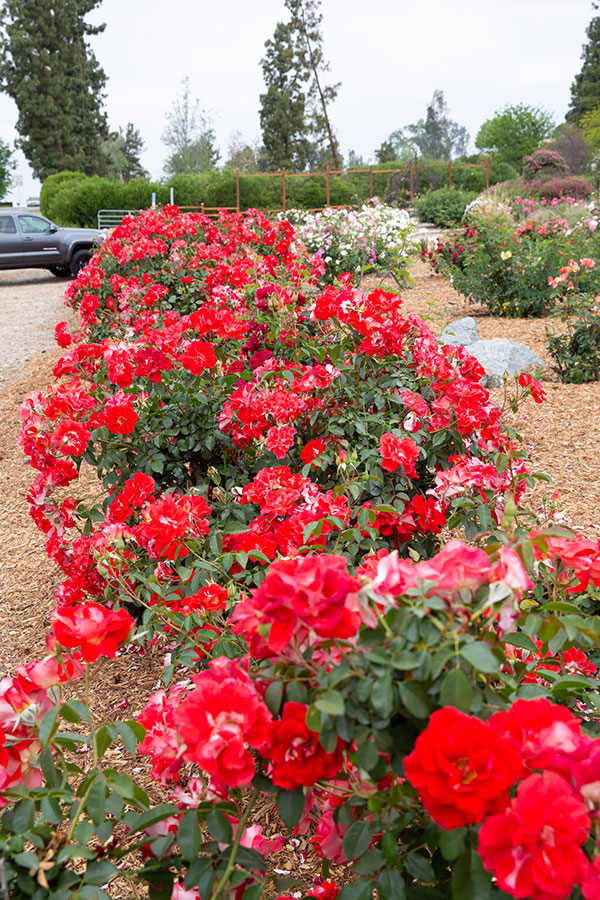fertilizer
Roses will perform much better if given adequate fertilizer. Use a well balanced fertilizer, such as 10‑10‑10, N‑P‑K. The three numbers used to describe a fertilizer tell how much of the three major nutrients are in that fertilizer. The first number (N) is the Nitrogen content, the second (P) is Phosphorous, and the third (K) is Potassium. Nitrogen or Nitrogen‑Phosphorous‑Potassium, (leaves,flowers,roots). Fertilize less during the first year while the plant is getting established.
When planting roses, it is recommended that you add long‑term sources of Phosphorous and Potassium to the soil near the roots because these two elements move slowly through the soil. Bone meal and rock phosphate are good long‑term sources of Phosphorous. Granite sand is a long‑term source of Potassium.
Cottonseed meal (lowers soil P.H.), alfalfa meal, and blood meal are organic sources of Nitrogen. Alfalfa meal also releases a growth stimulator as it decomposes. Many forms of inorganic Nitrogen leach quickly from the soil. Nitrogen also helps stimulate basal breaks.
Some rose growers fertilize with Epsom salts. Epsom salts are magnesium sulfate, a source of Magnesium. Being a sulfate, it will lower soil P.H. Although the need to use of Epsom salts is frequently debated, Magnesium (along with Nitrogen) is supposed to stimulate basal breaks. Many gardeners use 1/4 cup of Epsom salts per plant in the Spring and/or Fall. Some use as little as 1 tablespoon per plant, others up to 1/2 cup.
Seaweed is a good organic source of trace elements.
